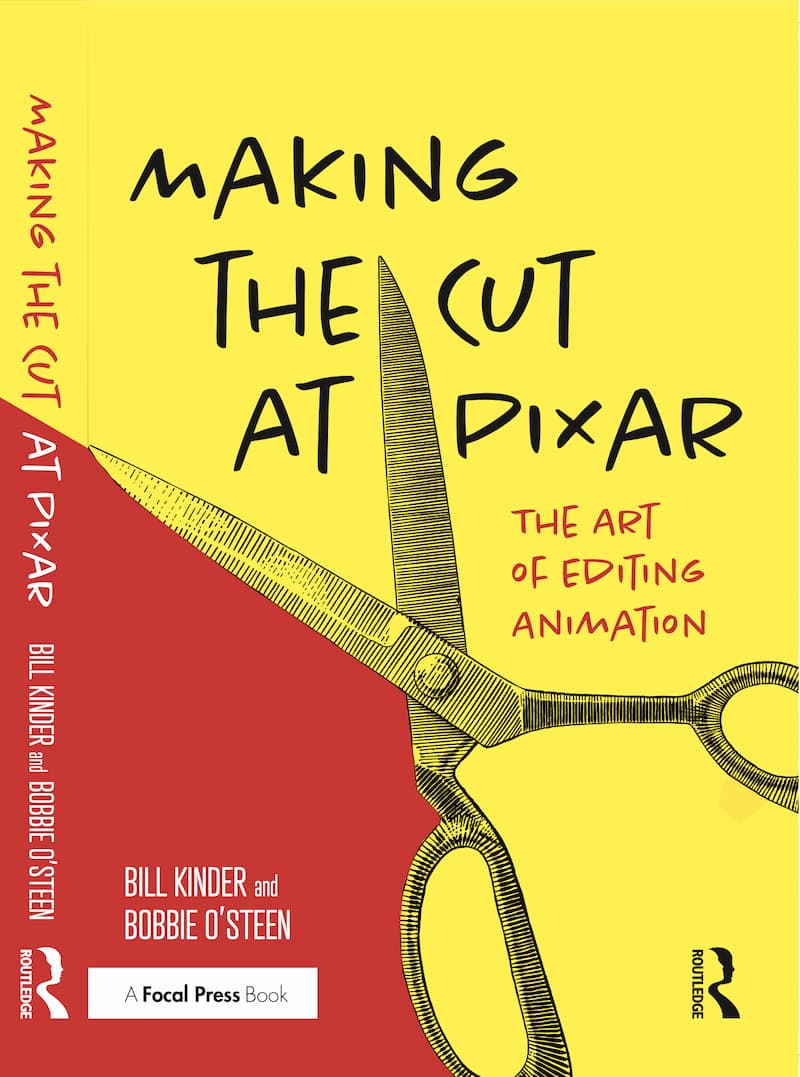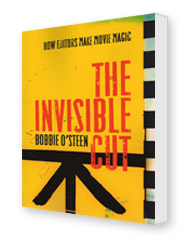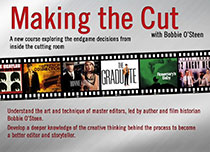A Tale of Two Editors: Carol Littleton and Tim Squyres.
In January and February I hosted two events, each one honoring a remarkable film editor.
The first was with Carol Littleton, put on by UCLA Film and Television Archive at the Billy Wilder Theater. In our discussion we projected frame grabs of the actual cuts from “Body Heat,” recreating the analysis of her work from my book, The Invisible Cut: How Editors Make Movie Magic. A screening of that movie was followed by a Q & A with the audience. About a month later I staged a similar event with Tim Squyres at 92Y Tribeca, where he ran footage showing specific cuts, we deconstructed his work and screened “Gosford Park.”
My reason for doing this was to show and tell how an editor works, giving the audience a depth of understanding and appreciation for this final storyteller in the moviemaking process.
What I didn’t expect was the striking study in contrasts: of these two movies, their directors – and most of the all the editors.
First, the two movies and their directors:
“Body Heat,” made in 1981, is both a parody and tribute to the film noir genre. Writer and first-time director Lawrence Kasdan was very particular about staying true to the arch, noirish dialog, and he made it clear to his actors, in rehearsal, that this was not to be tampered with. The plotting was also very complex and the dénouement and had to be delicately adhered to. He also was careful in creating a balance between explicit and implicit sexuality, and because of that was absolutely set on hiring a female editor.
“Gosford Park,” made in 2001, takes place at an English country estate in 1932 and was directed by the iconoclastic director Robert Altman. His intention was to upend convention. He didn’t really care that much about the Agatha Christie-type murder plot; he was more interested in examining behavior among the English upper and servant classes. He also liked to improvise from the screenplay in rehearsal so that the actors could discover ‘the truth’ in the scene. What intrigued him in his films were ‘the errors.’
Now, the two editors:
Carol Littleton was originally going to be a professional musician and is very much in tune with the musicality of language in a movie. She was particularly keyed in to the hyper-stylized and seductive dialog in “Body Heat.” Carol also said she hears music in the rhythm and movement of the imagery when she cuts; and although it is hard to describe something as visual and instinctual as editing, there is something distinctly musical about her work. As is true of all editors, she also has the discipline of a musician. And even though she has for many years edited on a computer, she still approaches the footage very much the same way she did when she was cutting film, which is to do one version of the entire first cut. She may try many variations in certain parts of the movie, but she will always keep that original version as her basis. Her female sensibility had a particular impact on “Body Heat;” she showed that the evocative power of one’s imagination is sexier than a lot of graphic nudity. She was also able to internalize the emotions of the femme fatale for the women in the audience, which is unusual for film noir. There was a problem when they were shooting the turning-point scene we ran and deconstructed from that movie. Much of the original footage was unusable and as a result Carol had to intercut three points of view, two of which were re-shoots. In fact, the tension that Carol created using eye contact and dynamic movement actually made the scene what it was, a powerful erotic high point of the movie. But that is, after all, an elemental to the editor’s job, making the most out of the compromises that inevitably happen during the shooting of a movie.

Carol and I looking at frame grabs of her cuts from “Body Heat”
Tim Squyres comes from a family of scientists and was going to be an astronomer himself. And in a sense his background informs his work. He has the sensibility of an artist but also has a uniquely meticulous, methodical way of approaching the almost unlimited possibilities that are presented to an editor. He will cut several preliminary versions before he even starts to cut the version that he will show to the director: first a version all in close-ups, then one all in medium shots, etc, basically a version for each angle. He will not rest until he exercises all the possibilities. But when he first ran some of the initial dailies of “Gosford Park” he thought he was going lose his mind. In fact the talk on the set was ‘What’s the editor going to do with this?’ And that’s because, with only 55 days to shoot 59 actors – many in group scenes – Altman knew he couldn’t cover the scenes in a traditional manner. Instead he usually had two cameras dolly or pan among the actors, always moving whether they were motivated or not – and no two takes were ever the same. So Tim adjusted his method, still creating several versions, but in this case using sections of footage rather than angles. As a result he often had to make mismatched pieces fit together, and he showed us some of the ways he used sleight of hand to keep the audience from noticing. We also saw that – because he made himself cut all those versions – he was able to unearth many gems, those surprising, happy accidents that take place on an Altman set.

Tim and I looking at footage of his cuts from “Gosford Park”
And in both of the movies, the directors were smart enough to leave the editors alone when they put the movie in a first cut and overall had a give-and-take working relationship that, at its best, resembles a good marriage. In Carol’s case, her work on “Body Heat” was the beginning of a 29-year friendship and working relationship with Lawrence Kasdan. And Robert Altman called Tim’s work on “Gosford Park” ‘flawless.’ Can’t get much better than that.
Last but not least I want to mention the two editors’ similarities, since it unravels some of the mystery behind their successes. They’re both passionate about what they do, which was so evident at these events when they explained their process before the screening; and then – after viewing those glorious 35mm prints years in front of a very receptive audience – were energized enough to field Q &A’s late into the night. What was also apparent is that they both have a certain calm, wisdom, and sense of humor necessary to negotiate a world that can be full of insecurities and political minefields. They are grounded by confidence; but they’re also humble in their quest to honor the director’s vision and have the clear-eyed knowledge that what matters most is making the movie the best it can possibly be.

In discussion with Carol at the Billy Wilder Theater

Talking to Tim at 92 Y Tribeca




